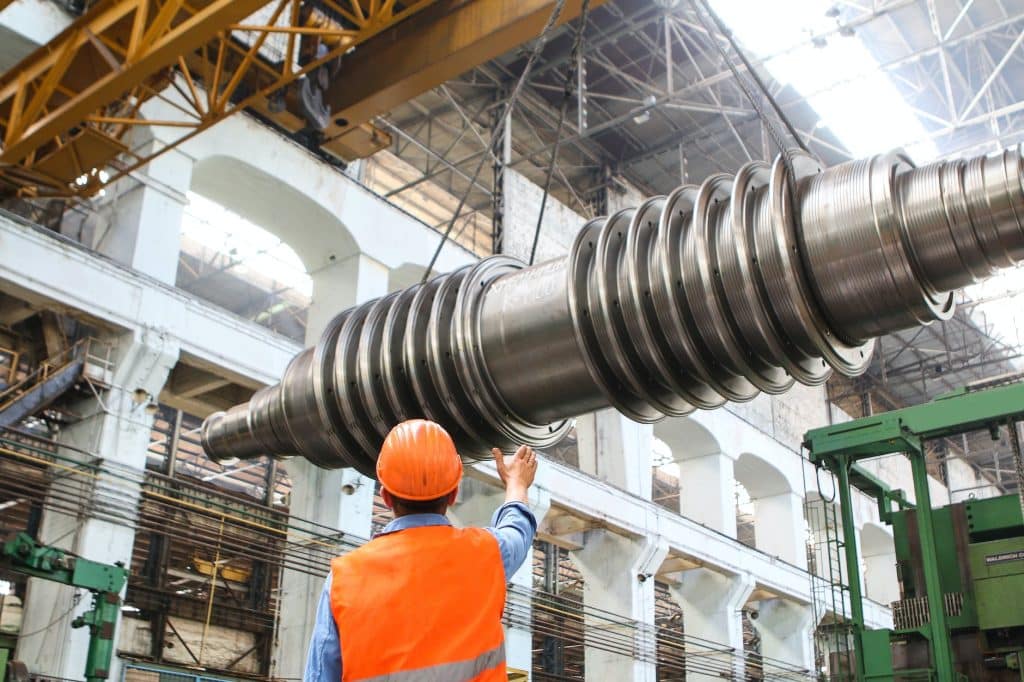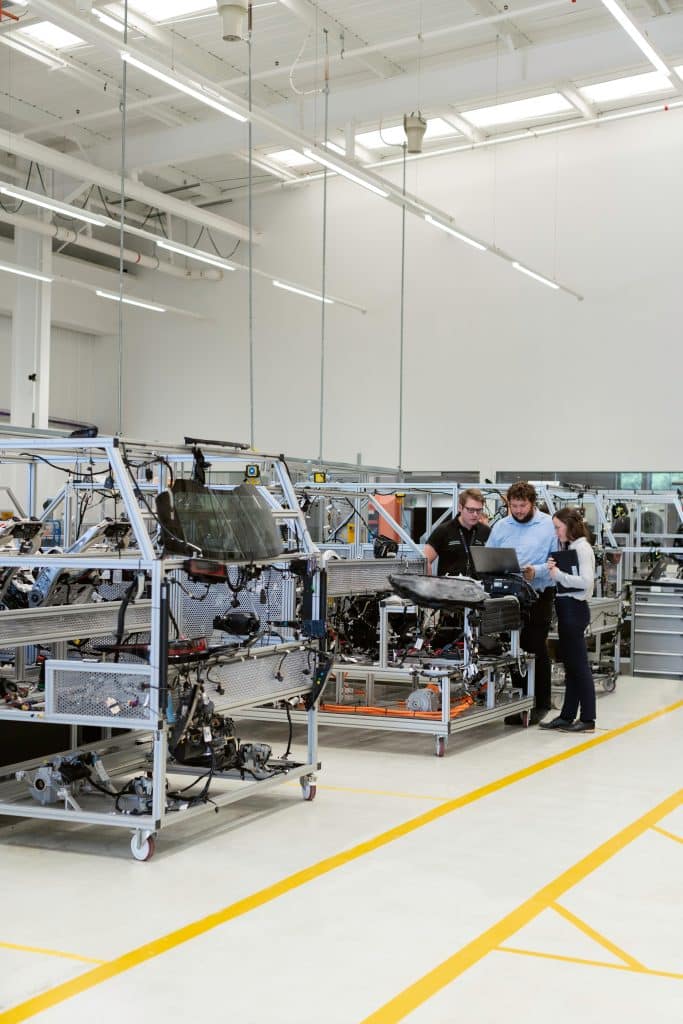Technology encompasses various disciplines and concepts. To understand technology completely, one must consider how different fields interact and contribute to development. Engineering is one of the fields that has a significant impact on technology and vice versa.
While they seek different ends from science, engineering and technology are closely related concepts but are often mistaken for one another. You cannot blame anyone for that, though, as engineering is a component of the technological space. After all, engineering and technology have both changed the world.
As humans live their lives, they use engineering and technology at various times. But do you know the relationship between the two and the extent of the influence engineering and technology have had on society? When discussing the impact of engineering and technology, barely any components in society are not affected.
With the rapid rise in the human population and the arrival of the industrial revolution, the potential for engineering and technology to improve the labor sector and significantly impact the world has increased. So, understanding specific engineering and technology principles is crucial to best employ them. This article examines the complex relationship between engineering and technology and how they support one another in improving the world.
What is the relationship between technology and engineering?
As mentioned above, technology can be confused with engineering in more ways than one, as they are closely related. In some cases, even schools teaching engineering are called “Schools of Technology.” So, it’s no wonder that it can sometimes make people question the terms and their definitions.
Engineering is the creation, assessment, and building of processes, structures, and machines using mathematics and science. While inventors and scientists develop inventions, engineers apply these discoveries to the real world. Engineering is a way for society to change, modify, and enhance the physical world for humans to have a better life. Moreover, it strives to design and manufacture useful devices or materials known as technologies.
Technology is the application of scientific knowledge for practical purposes. It is a branch of knowledge dealing with the development and use of technical means and their interrelation with the environment, society, and life. It draws upon such subjects as pure science, applied science, industrial arts, and engineering. By applying these scientific purposes, technology can allow humans to access energy, sanitation, electricity, and clean water. In short, technology has been around since the prehistoric era. In modern times, it can be seen in the development of the internet, touch-screen phones, and other equipment.

While engineering is regarded as a question of “how to build a machine,” technology is considered the answer. Existing technological advancements are used to engineer more products and innovation. Engineering uses one’s mind and efforts to build something innovative. So put simply, engineers are the architects of technology. They create complex plans that have to be executed to build something new and valuable. Engineering is what gives birth to technology. To understand its relationship even further, you must understand how they differ.
Input
Technology uses knowledge and raw materials to make something innovative for society, while engineering is the study of scientific applications to understand how to make new inventions for society. In short, both engineering and technology are products of science.
Output
Engineering offers society an understanding of combining resources and knowledge to create new technology. An output of this understanding is products of technology such as air conditioners, laptops, and mobile phones. In short, engineering is done by being knowledgeable, while technology is developed by taking action.
Production and reliability
Engineering and technology also differ in production and reliability. While technology can be mass-produced, engineering makes it possible for technology to be prefabricated. This is because engineering is a trial-and-error process. Engineers perform comprehensive tests to find designs that work. If the trial is successful, more of the same products are manufactured, and it becomes technology. By continuous testing, engineers can ensure technology is reliable.
There is a thin line of difference between engineering and technology. The critical thing is that technology exists and can be used to perform general tasks. On the other hand, engineering is more task-specific and goal-oriented. Nevertheless, these two are indispensable for the nation’s infrastructure growth and economic development. According to the US Department of Defense, engineering contributes over $2.35 trillion to the US economy, while technology is responsible for roughly 39%.
Furthermore, the relationship between technology and engineering is vital to advancing both fields. Without engineering, technology would not achieve the growth and sophistication it has today. This is because engineers use technology to design, build, and enhance products and systems while technology empowers engineers to reach their goals effectively and efficiently.
However, it is worth noting that the development of innovative technologies is driven by the demands and specific requirements of engineers seeking to solve complex issues and create modern solutions. For instance, the development of new materials like Kevlar and carbon fiber has been motivated by the need for strong and lightweight materials in automotive and space engineering.

Meanwhile, technology allows engineers to design and build systems, machines, and structures once thought impossible. For example, computer-aided design software innovations empower engineers to create and evaluate sophisticated systems in numerous virtual environments. At the same time, automation and robotic advances have revolutionized manufacturing processes. Doing so allows them to build complex products with better precision and efficiency while saving time and money in the design process.
If you are still confused about their relationship, here are several interconnected illustrations which might be helpful.
- A building architect or owner asks an engineer to design their new office building with a rain garden that will divert rainwater from the roof to the soil. When designing the system, they will ask the engineer to consider the water volume per hour generated by a rainstorm, the soil obstruction, and soil porosity. Once an engineer gives the go-ahead, the system will be constructed by technologists such as gardeners, landscapers, a backhoe operator, and suppliers of paving installers and prefabricated drainage concrete boxes.
- In this example, let’s assume the same building needs electricity. For this to work, the building owner must consult an electrical power system engineer to design the power distribution system. While designing the system, an engineer must consider the electrical mains available, the number of circuits needed, and the capacity of given wire sizes. A technologist in the form of an electrical contractor or electrician would construct the system physically. At the same time, other factory technicians fabricate the supplied materials, such as solar panels, circuit breakers, pipes, and wires.
- If that example sounds more complex, here’s a simple one you can easily digest. In a robotics organization, a tenant in a new building wants to market a new type of robotic floor cleaner to wash the kitchen floor. To create this robotic floor cleaner, a team of engineers must design the machine’s motors, gears, physical frames, circuitry, and program. Once the design is complete, they will send it to a fabrication facility where expert technologists on plastic and electronic assembly lines produce the design for shipment to customers.

Why are engineering management professionals essential in engineering and technology?
Technology is never static. Now and then, innovative technologies are produced to combat global challenges and ensure the human race stays up to date with the changes. The world can thank engineers for that because they are forward-thinkers and create innovative technologies that stave off future problems.
Engineering management professionals assume a critical role in the commercialization, development, and awareness of the public of these innovative technologies. Without them, the world would be ignorant of the services and products that can solve some of life’s more pressing problems. Other than that, here are reasons why engineering management professionals are essential in engineering and technology.
They identify market opportunities
The importance of identifying market opportunities in engineering is too hard to ignore, especially in today’s competition-driven world, wherein most innovations become obsolete because of failing to gain market share. Engineering management professionals are skilled experts with extensive technological backgrounds who can perform in-depth assessments of untapped markets and create technologies that speak volumes to their target market. Often, they look for shifts in human behavior, consider where waste exists, investigate the pain points, and track market trends to uncover opportunities that would otherwise be unavailable without thinking deeper.
They secure funding
The success of an engineering technology often comes down to securing funding at the right time. While engineering requires technical knowledge, management calls for expertise beyond knowledge itself. Engineering management professionals have sufficient financial knowledge to negotiate, persuade, and secure the proper funding at the right time. This is because they usually manage engineering projects on multiple scales, requiring them to handle data, learn budgeting, and cover risk management.
They develop business plans
Planning allows engineering management professionals to create tangible objectives for the technologies engineers develop. After all, the key to where technology goes into the lean is execution and management. While developing business plans, engineering management professionals will include components such as competition, market analysis, financial analysis, and project development. This includes funding requirements, a comprehensive project description, and a timeline. By creating a business plan, engineering management professionals can ensure their team sticks to their objectives in the development stage process.

How to become an engineering management professional
Becoming an engineering management professional can be rewarding. Engineering projects are often complex, even on a modest scale. While this might seem daunting at first glance, this challenge can enhance your creativity and leadership skills by improving your ability to mobilize people, technology, and finances. This allows you to stand out and spearhead the impact of engineering trends and influence the industry in more ways than one.
Moreover, engineering management also comes with significant financial rewards. According to the US Bureau of Labor Statistics, an engineering manager earns an average annual salary of $152,350, depending on experience, academic background, and certifications. Although there are several ways to become an engineering manager, the process often includes many of the same steps. This is because engineering management jobs require various practical skills and extensive education.
Becoming an engineering manager begins with an undergraduate degree in engineering or engineering management. This way, you can develop a fundamental understanding of the physical phenomena within complex systems and think critically using basic mathematical formulas. Depending on your chosen academic institution, some engineering management programs customize curriculums for a particular discipline to provide students with more in-depth education.
Once you’ve earned your undergraduate degree, the next step is to gain relevant experience through involvement with internships or campus clubs. Direct exposure to real-world situations can be highly advantageous in advancing your career or pursuing a graduate degree. If you decide to choose the latter, looking at the university of Ottawa online programs for engineering is a great option, mainly since it provides an extensive background in the dynamics of materials systems, finite element analysis, and thermodynamics.
Although you can enter the industry right after graduation, an advanced engineering management degree will make you more competitive for positions. Unlike undergraduate engineering management programs, a graduate degree offers an advanced curriculum with a comprehensive focus on individual subjects. Through this process, you can gain the necessary advantage to climb the ladder within your field.
There is no getting around the fact that engineering is a cutthroat environment. For you to reach the top, you’ll need any advantage you can get. With an advanced engineering management degree, you can gain a vast knowledge of various topics in planning, collaboration, and handling of technical and engineering tasks of an organization. Career opportunities will come to you if your academic qualifications and problem-solving skills increase.
After earning your degree, you’ll need to pursue a state license that permits you to work within the geographical borders of your state. Depending on your state, licensing requirements can vary. However, it generally requires an engineering management degree from an accredited academic institution, a passing grade on the engineering exam, and experience as an engineer.














Leave a Reply